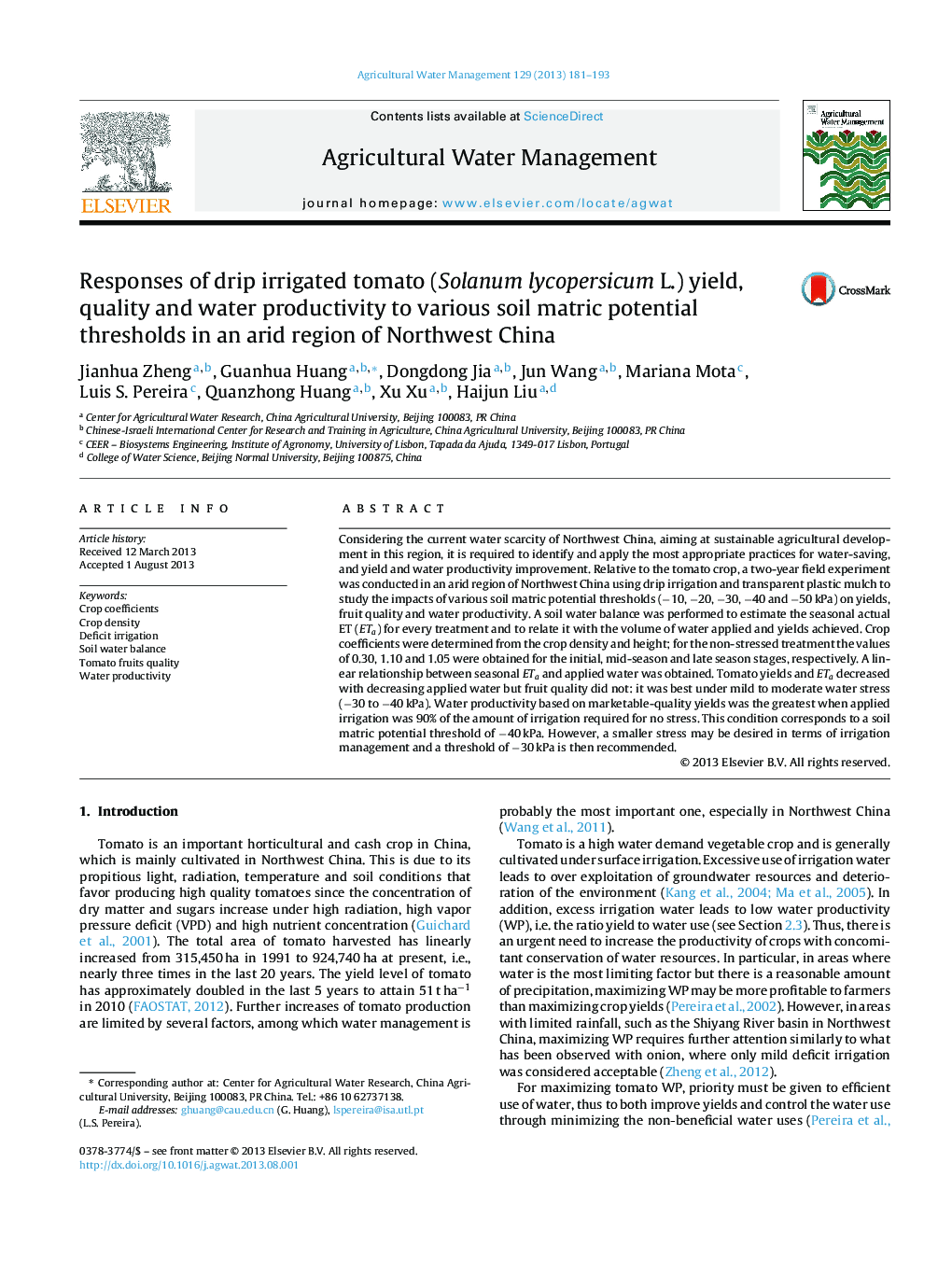| Article ID | Journal | Published Year | Pages | File Type |
|---|---|---|---|---|
| 6364067 | Agricultural Water Management | 2013 | 13 Pages |
Abstract
Considering the current water scarcity of Northwest China, aiming at sustainable agricultural development in this region, it is required to identify and apply the most appropriate practices for water-saving, and yield and water productivity improvement. Relative to the tomato crop, a two-year field experiment was conducted in an arid region of Northwest China using drip irrigation and transparent plastic mulch to study the impacts of various soil matric potential thresholds (â10, â20, â30, â40 and â50Â kPa) on yields, fruit quality and water productivity. A soil water balance was performed to estimate the seasonal actual ET (ETa) for every treatment and to relate it with the volume of water applied and yields achieved. Crop coefficients were determined from the crop density and height; for the non-stressed treatment the values of 0.30, 1.10 and 1.05 were obtained for the initial, mid-season and late season stages, respectively. A linear relationship between seasonal ETa and applied water was obtained. Tomato yields and ETa decreased with decreasing applied water but fruit quality did not: it was best under mild to moderate water stress (â30 to â40Â kPa). Water productivity based on marketable-quality yields was the greatest when applied irrigation was 90% of the amount of irrigation required for no stress. This condition corresponds to a soil matric potential threshold of â40Â kPa. However, a smaller stress may be desired in terms of irrigation management and a threshold of â30Â kPa is then recommended.
Related Topics
Life Sciences
Agricultural and Biological Sciences
Agronomy and Crop Science
Authors
Jianhua Zheng, Guanhua Huang, Dongdong Jia, Jun Wang, Mariana Mota, Luis S. Pereira, Quanzhong Huang, Xu Xu, Haijun Liu,
